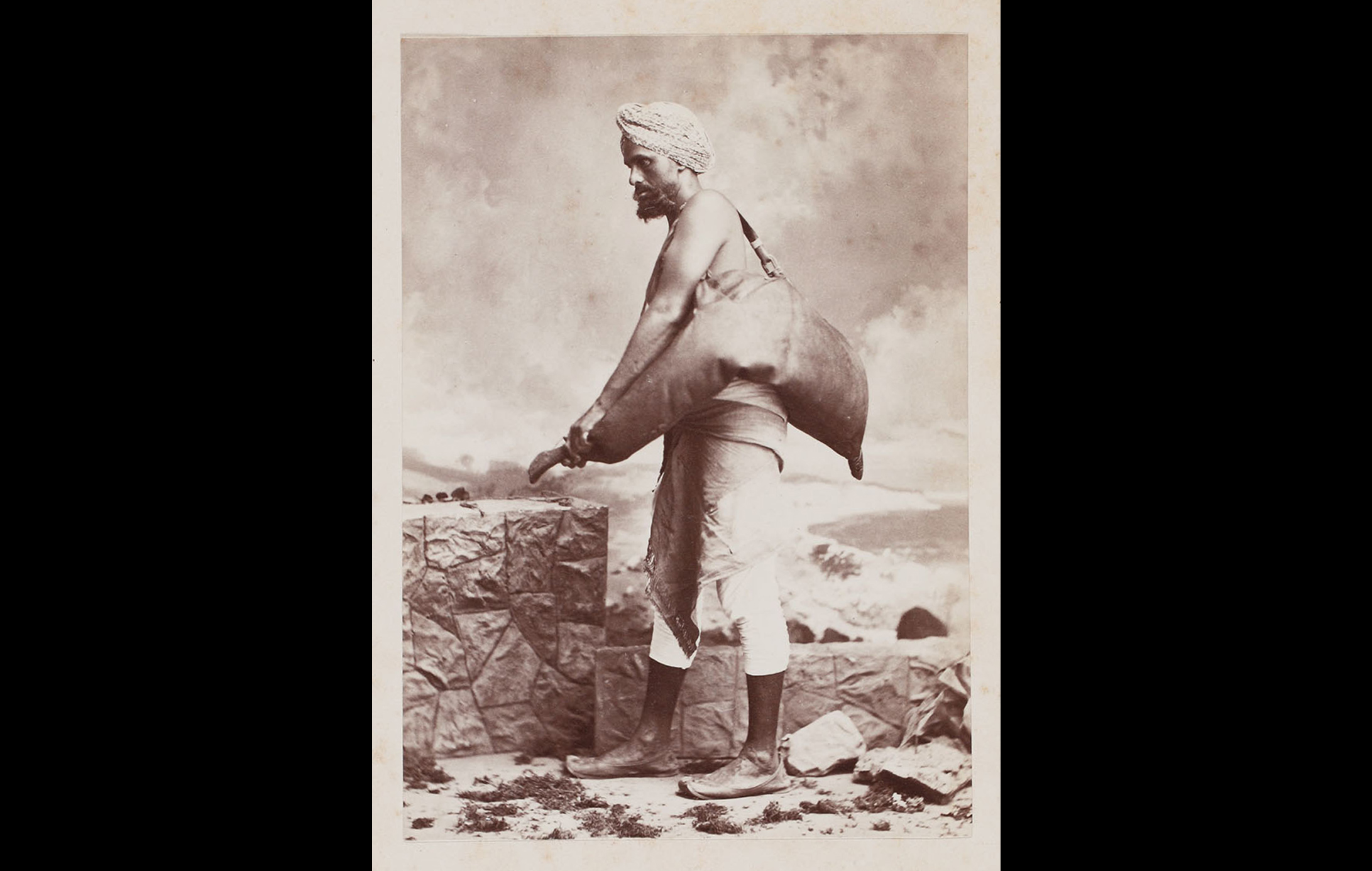
Water-carriers in the Subcontinent were named Bhishti, after the Persian ‘bihisht’ meaning paradise. For centuries before the invention of the bottle and refrigeration, these men were the sole providers of succour to anyone who ran out of water on the road. The Bhisti’s trademark bag or mashaq was made from animal hide and it could hold 30-35 litres of water. Legends have it that a Bhisti saved Emperor Humayun from drowning at the battle at Chausa (1539) against Afghan ruler Sher Shah. The water-giver was rewarded with a half-day reign on the imperial throne for his bravery.
This profession has lasted into the 21st century, although just barely; newspapers report often on the last remaining Bhistis of Old Delhi, hired mainly for ceremonial purposes attached to a dargah or cemetery, like the watering of graves.
Title
A Bhisti (Water-carrier)Period
late 19th centuryPhotographer
UnidentifiedDimensions
H: 14 cm x W: 9.9 cmAccession No.
2016.59.34 (a)Genre: Photography
